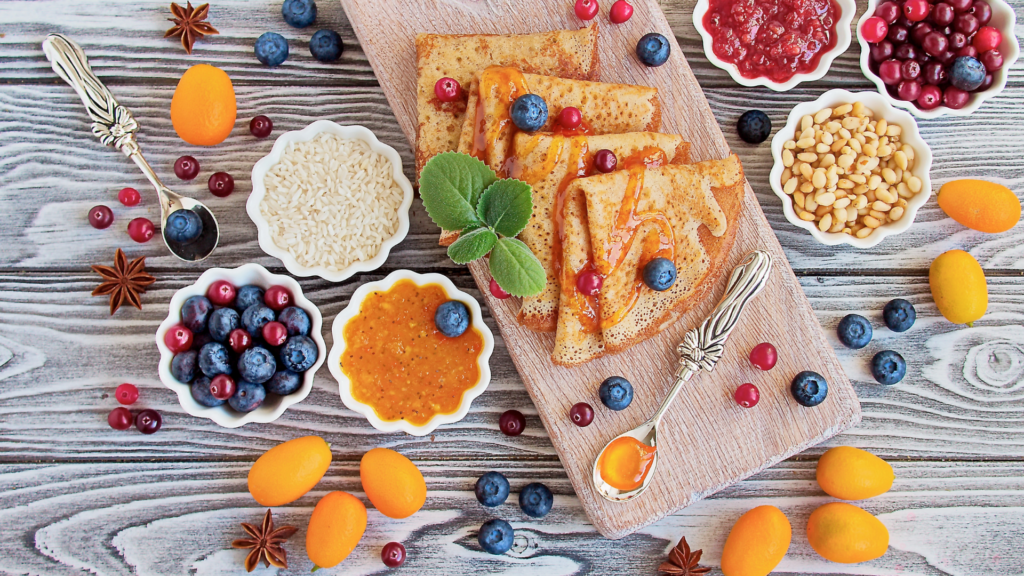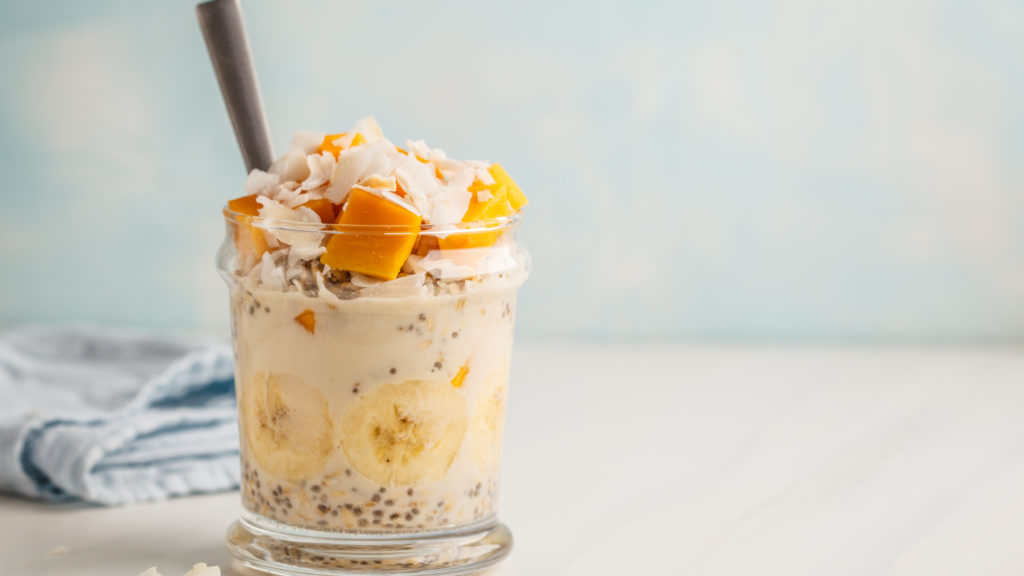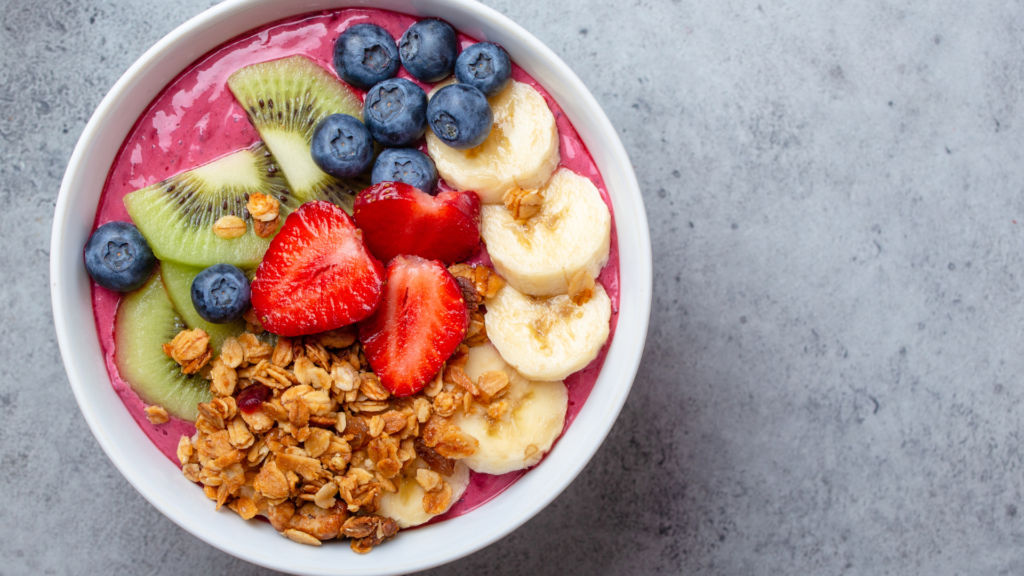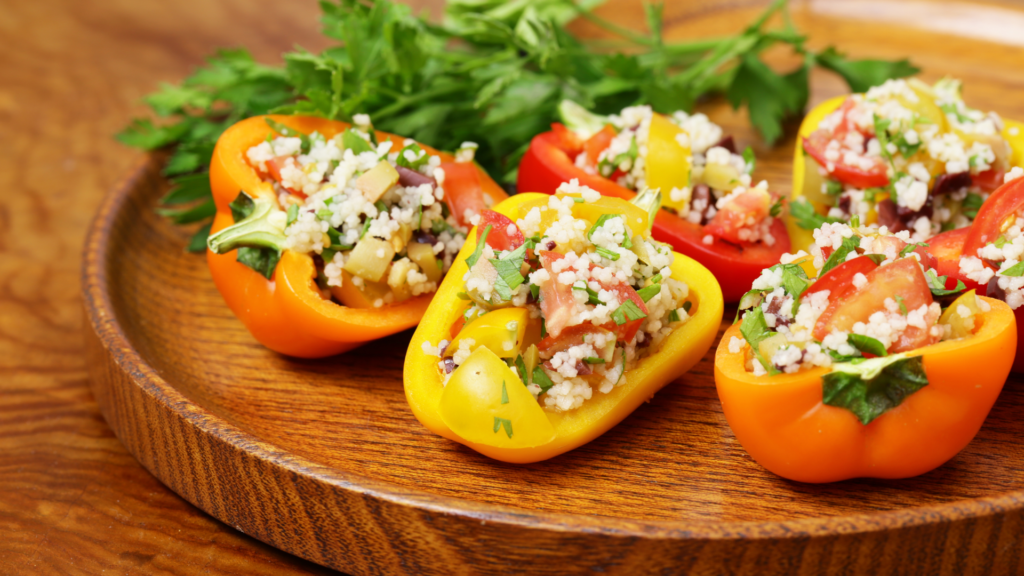In today’s world, the demand for both vegan and gluten-free diets has skyrocketed. Whether you’re motivated by health, ethical reasons, or the desire to simply feel better, choosing vegan and gluten free recipes can bring a refreshing change to your lifestyle. But why exactly are more people jumping on this bandwagon?

What Is a Vegan Diet?
A vegan diet excludes all animal products, including meat, dairy, eggs, and honey. The focus is entirely on plant-based foods like fruits, vegetables, whole grains, legumes, nuts, and seeds. This way of eating is not only about avoiding animal-derived foods but also about embracing a lifestyle that promotes ethical, environmental, and health-conscious choices. Veganism is growing in popularity, with many people turning to it for its potential health benefits, including a lower risk of chronic diseases and improved digestion.
Key Principles of Veganism
The main principle of veganism is the exclusion of animal-based products from your diet. This includes avoiding all forms of meat, poultry, fish, eggs, and dairy. Many people choose veganism for ethical reasons, such as advocating for animal rights and reducing animal exploitation. Environmental concerns also play a role, as plant-based diets tend to have a smaller carbon footprint than diets that rely on animal agriculture. Additionally, veganism is seen as a way to improve health by reducing the intake of saturated fats and processed meats.
Common Ingredients in Vegan and Gluten Free Recipes
Vegan recipes rely on a variety of plant-based ingredients to replace animal products. Common staples include legumes like lentils, beans, and chickpeas, which provide a rich source of protein. Tofu and tempeh, made from soybeans, are popular meat alternatives. Whole grains like quinoa, brown rice, and oats offer fiber and nutrients.
Vegan recipes also use plant-based milk (like almond, soy, and oat milk) to replace dairy. Nuts, seeds, and vegetables such as leafy greens, sweet potatoes, and broccoli round out the diet, providing essential vitamins and minerals.
What Is a Gluten-Free Diet?
A gluten-free diet is one that eliminates gluten, a protein found in wheat, barley, rye, and their derivatives. People with celiac disease or non-celiac gluten sensitivity need to avoid gluten to prevent adverse health effects.
For others, going gluten-free is a lifestyle choice, often for digestive health or to manage conditions like irritable bowel syndrome (IBS). A gluten-free diet focuses on whole foods like fruits, vegetables, meat, fish, legumes, and grains such as rice and quinoa, while avoiding foods made with wheat-based flours like bread, pasta, and baked goods.
Understanding Gluten and Its Effects
Gluten is a protein found in wheat, barley, and rye that helps dough rise and maintain its shape. While gluten is harmless for most people, some individuals cannot properly digest it. For those with celiac disease, gluten triggers an immune response that damages the small intestine and impairs nutrient absorption. Others may experience discomfort from gluten sensitivity, including bloating, fatigue, and stomach pain. Avoiding gluten helps alleviate these symptoms and promotes better digestion and overall health for those affected.
Common Gluten-Free Substitutes
There are plenty of gluten-free alternatives to common gluten-containing ingredients. Popular gluten-free flours include rice flour, almond flour, and coconut flour, which can replace wheat flour in baking and cooking. Quinoa, millet, and corn are gluten-free grains that can be used in place of wheat-based grains like pasta and bread.
Additionally, many gluten-free products now mimic traditional foods like pizza crusts, cookies, and breads using ingredients such as tapioca starch, chickpea flour, or gluten-free oats. These substitutes allow people to enjoy their favorite dishes without compromising their health.
The Best Vegan and Gluten Free Ingredients to Stock Up On
When following a vegan and gluten-free diet, having the right ingredients on hand is essential for preparing satisfying, nutritious meals. Whether you’re baking, cooking savory dishes, or creating sweet treats, these plant-based and gluten-free staples can be your go-to items. Here are some of the best ingredients to keep stocked in your pantry and fridge.
Whole Grains and Flour Alternatives
Whole grains are a key component of a healthy vegan gluten-free diet. They provide essential fiber, protein, and nutrients that are often lacking in highly processed foods. Some of the best whole grains and flour alternatives include:
- Quinoa: A complete protein, quinoa contains all nine essential amino acids, making it an excellent choice for vegan meals. It’s perfect for salads, bowls, or as a side dish.
- Brown Rice: A versatile grain that pairs well with almost anything, brown rice is high in fiber and great for stir-fries, soups, and casseroles.
- Oats: Naturally gluten-free (if cross-contamination is avoided), oats are perfect for breakfast, smoothies, or baked goods.
- Gluten-Free Flours: There are many gluten-free flours to choose from, such as almond flour, coconut flour, rice flour, and chickpea flour. These can be used in baking or thickening sauces. Almond flour and coconut flour work great in gluten-free cakes and cookies, while rice and chickpea flour are great for making savory dishes like pancakes or fritters.
These whole grains and flour alternatives can be the base for a variety of vegan and gluten-free meals, giving you both texture and nutrition in your cooking.
Protein Sources for Vegan Gluten-Free Meals
Getting enough protein is crucial in any diet, especially in a vegan and gluten-free one. Luckily, there are plenty of plant-based protein sources that are also gluten-free:
- Legumes: Beans, lentils, chickpeas, and peas are excellent sources of plant-based protein and are naturally gluten-free. They’re perfect for soups, stews, curries, or as the base for burgers and salads.
- Tofu: Made from soybeans, tofu is a versatile protein that takes on the flavor of whatever it’s cooked with. It’s great in stir-fries, scrambles, or grilled as a meat substitute.
- Tempeh: A fermented soy product, tempeh has a nutty flavor and firm texture. It’s a great addition to stir-fries, sandwiches, and salads.
- Nuts and Seeds: Almonds, cashews, sunflower seeds, chia seeds, and hemp seeds are all excellent protein sources. They can be added to smoothies, baked goods, or eaten as snacks. Nut butters like peanut butter or almond butter are also great for adding protein to your meals.
- Edamame: These young soybeans are packed with protein and can be eaten as a snack or tossed into salads and bowls.
With these protein-packed ingredients, you can easily create hearty and filling meals that support muscle growth and overall health.
Dairy-Free and Egg-Free Alternatives
Dairy and eggs are staples in many traditional recipes, but there are plenty of plant-based alternatives that fit a vegan and gluten-free diet:
- Plant-Based Milks: Almond milk, oat milk, soy milk, and coconut milk are all great substitutes for cow’s milk. They can be used in cooking, baking, or as a beverage. Look for unsweetened varieties to keep added sugar levels low.
- Non-Dairy Yogurts: Coconut yogurt, almond yogurt, and soy yogurt are dairy-free options that can be used in smoothies, parfaits, or as a topping for granola and fruit.
- Vegan Cheeses: There are many delicious dairy-free cheeses made from nuts (like cashew-based cheese), soy, or coconut. Vegan cheese works well in pasta dishes, pizzas, sandwiches, and even on its own as a snack.
- Egg Replacers: For baking or scrambles, you can substitute eggs with ingredients like flaxseeds or chia seeds mixed with water (to make an egg-like gel), silken tofu (for baking), or store-bought egg replacers made from starches and proteins. Aquafaba (the liquid from canned chickpeas) is also a popular egg substitute for baking or making meringues.
- Vegan Butters: Plant-based butter made from oils like coconut, avocado, or sunflower is a great substitute for traditional butter. These work well in baking or as a spread for toast.
These dairy-free and egg-free alternatives allow you to enjoy the same texture and flavor in your meals without any animal-derived ingredients, ensuring your dishes stay vegan and gluten-free.
Top 10 Vegan Gluten-Free Breakfast Recipes
Recipe 1: Vegan Gluten-Free Pancakes
These fluffy vegan gluten-free pancakes are the perfect way to start your day! They’re light, easy to make, and packed with flavor, plus you can top them with your favorite fruits, nuts, or syrup.

Ingredients:
- 1 cup gluten-free all-purpose flour (make sure it includes xanthan gum)
- 1 tablespoon sugar (optional)
- 1 teaspoon baking powder
- 1/2 teaspoon baking soda
- 1/4 teaspoon salt
- 1 cup unsweetened almond milk (or other plant-based milk)
- 2 tablespoons melted coconut oil (or vegetable oil)
- 1 teaspoon vanilla extract
- 1 tablespoon apple cider vinegar (or lemon juice)
- Optional toppings: fresh fruit, maple syrup, nut butter, or vegan whipped cream
Instructions:
- Mix Dry Ingredients: In a large bowl, whisk together the gluten-free flour, sugar (if using), baking powder, baking soda, and salt.
- Prepare Wet Ingredients: In a separate bowl or measuring cup, combine the almond milk, melted coconut oil, vanilla extract, and apple cider vinegar. Stir well to combine. The apple cider vinegar will react with the baking soda to help the pancakes rise and become fluffy.
- Combine Wet and Dry: Pour the wet ingredients into the dry ingredients. Stir gently until just combined. Be careful not to overmix, as this can make the pancakes dense. If the batter is too thick, add a little more almond milk to reach a pourable consistency.
- Cook the Pancakes: Heat a non-stick skillet or griddle over medium heat. Lightly grease with oil or cooking spray. Pour about 1/4 cup of the batter onto the skillet for each pancake. Cook for about 2-3 minutes, or until bubbles form on the surface. Flip the pancake and cook for another 1-2 minutes on the other side, until golden brown.
- Serve: Stack the pancakes on a plate and serve with your favorite toppings, such as fresh berries, sliced bananas, maple syrup, or a drizzle of peanut butter.
Recipe 2: Chia Pudding with Fruit and Nuts
This chia pudding is a simple, nutritious breakfast or snack that can be made the night before for an easy grab-and-go option. Packed with omega-3s and fiber, it’s a great way to fuel your day.

Ingredients:
- 3 tablespoons chia seeds
- 1 cup unsweetened almond milk (or any plant-based milk)
- 1 tablespoon maple syrup or agave (optional for sweetness)
- 1/2 teaspoon vanilla extract
- Fresh fruit (e.g., berries, sliced banana, kiwi)
- A handful of nuts (e.g., almonds, walnuts, or cashews), chopped
- Optional: shredded coconut, cinnamon, or a drizzle of nut butter
Instructions:
- Prepare the Chia Pudding: In a medium bowl, combine the chia seeds, almond milk, maple syrup (if using), and vanilla extract. Stir well to combine.
- Refrigerate: Cover the bowl and place it in the refrigerator for at least 3 hours, or overnight. The chia seeds will absorb the liquid and expand, creating a thick, pudding-like texture.
- Serve: Once the pudding has set, give it a quick stir to ensure it’s smooth and creamy. Spoon the pudding into serving bowls.
- Top with Fruit and Nuts: Add fresh fruit, chopped nuts, and any other desired toppings like shredded coconut, cinnamon, or a drizzle of nut butter.
- Enjoy: Your chia pudding is ready to enjoy! This dish can also be prepped ahead of time for a quick breakfast or snack.
Also Discover: Easy Guacamole Recipe: Fresh and Flavorful in Minutes
Recipe 3: Vegan Smoothie Bowl
This refreshing vegan smoothie bowl is a great way to pack in the nutrients with a colorful mix of fruits, greens, and toppings. It’s like a thick, creamy smoothie that you eat with a spoon!

Ingredients :
- 1 frozen banana
- 1/2 cup frozen berries (e.g., blueberries, strawberries, or mixed berries)
- 1/2 cup spinach (or any leafy green)
- 1/4 cup unsweetened almond milk (or other plant-based milk)
- 1 tablespoon chia seeds (optional for added texture)
- Toppings: granola, coconut flakes, fresh fruit (sliced banana, strawberries), hemp seeds, nuts (e.g., almonds, walnuts), peanut butter, or almond butter
Instructions:
- Blend the Base: In a blender, combine the frozen banana, frozen berries, spinach, almond milk, and chia seeds (if using). Blend until smooth and creamy. If the mixture is too thick, you can add a bit more almond milk to help it blend, but keep it thick enough to eat with a spoon.
- Pour into a Bowl: Once your smoothie is blended to the right consistency, pour it into a bowl.
- Add Toppings: Top the smoothie with your favorite toppings. You can use granola for crunch, fresh fruit for natural sweetness, coconut flakes for a tropical vibe, and nuts or nut butter for protein and healthy fats.
- Serve and Enjoy: Grab a spoon and dive into your refreshing, nutrient-packed smoothie bowl. It’s perfect for breakfast or a post-workout snack.
Delicious Vegan Gluten-Free Lunch Ideas
Lunch is the perfect time to fuel your body with nourishing, plant-based meals that are both satisfying and wholesome. Here are three delicious vegan and gluten-free lunch ideas that are simple to make, packed with flavor, and perfect for a midday boost.
Recipe 1: Quinoa Salad with Roasted Veggies
This colorful and nutrient-packed quinoa salad is a hearty lunch option. It’s loaded with fiber, protein, and antioxidants from the quinoa and roasted veggies, making it a filling and wholesome choice.

Ingredients:
- 1 cup quinoa (rinsed)
- 2 tablespoons olive oil
- 1 cup broccoli florets
- 1 cup bell peppers, chopped (any color)
- 1 small zucchini, sliced
- 1/2 teaspoon garlic powder
- 1/2 teaspoon smoked paprika
- Salt and pepper, to taste
- 1/4 cup chickpeas (canned or cooked)
- 1 tablespoon lemon juice
- 1 tablespoon tahini (optional, for creaminess)
- Fresh parsley or cilantro, chopped (for garnish)
Instructions:
- Cook the Quinoa: Rinse the quinoa under cold water to remove any bitterness. In a medium pot, bring 2 cups of water to a boil. Add the quinoa, reduce the heat to low, cover, and simmer for about 15 minutes, or until the water is absorbed and the quinoa is tender. Remove from heat and fluff with a fork.
- Roast the Veggies: Preheat your oven to 400°F (200°C). On a baking sheet, toss the broccoli, bell peppers, and zucchini with olive oil, garlic powder, smoked paprika, salt, and pepper. Roast for 20-25 minutes, tossing halfway through, until the veggies are tender and slightly browned.
- Assemble the Salad: In a large bowl, combine the cooked quinoa, roasted veggies, and chickpeas. Drizzle with lemon juice and tahini (if using), and toss to combine.
- Serve: Garnish with fresh parsley or cilantro and enjoy your vibrant, nutrient-dense salad!
Recipe 2: Vegan Gluten-Free Wraps
These vegan gluten-free wraps are quick, customizable, and perfect for lunch. Filled with fresh veggies, avocado, and a creamy hummus spread, they’re both delicious and satisfying.

Ingredients:
- 2 gluten-free tortillas or wraps (store-bought or homemade)
- 1/2 cup hummus (store-bought or homemade)
- 1 avocado, sliced
- 1 cup mixed greens (such as spinach, lettuce, or arugula)
- 1 medium carrot, grated or sliced into thin strips
- 1/2 cucumber, sliced
- 1/4 red onion, thinly sliced
- 1/4 cup sprouts or microgreens (optional)
- Salt and pepper, to taste
- Lemon juice (optional)
Instructions:
- Prepare the Wraps: Lay the gluten-free tortillas flat on a clean surface. Spread a generous amount of hummus evenly over each tortilla, leaving a small border around the edges.
- Add the Veggies: On top of the hummus, layer the avocado slices, mixed greens, grated carrot, cucumber slices, and red onion. If you have sprouts or microgreens, add those as well for extra crunch and nutrition.
- Season: Sprinkle with salt, pepper, and a squeeze of lemon juice for added flavor.
- Wrap and Serve: Fold in the sides of the tortillas and roll them up tightly. Slice each wrap in half, and serve immediately or wrap them up for an easy on-the-go lunch.
Recipe 3: Chickpea Salad Sandwich
This chickpea salad sandwich is a vegan twist on a classic favorite. Packed with protein, fiber, and healthy fats, it’s a satisfying lunch option that’s perfect for anyone craving something filling but light.

Ingredients:
- 1 can (15 oz) chickpeas, drained and rinsed
- 2 tablespoons vegan mayonnaise (or mashed avocado for a healthier version)
- 1 tablespoon Dijon mustard
- 1 tablespoon lemon juice
- 1/2 teaspoon garlic powder
- Salt and pepper, to taste
- 1/4 cup celery, finely chopped
- 1/4 cup red onion, finely chopped
- Fresh lettuce leaves (for serving)
- 2 slices gluten-free bread or toasted gluten-free sandwich rolls
Instructions:
- Mash the Chickpeas: In a large bowl, use a fork or potato masher to mash the chickpeas until they reach a chunky consistency (leave some whole for texture).
- Mix the Salad: To the mashed chickpeas, add the vegan mayo, Dijon mustard, lemon juice, garlic powder, salt, and pepper. Stir in the chopped celery and red onion for a crunch and extra flavor.
- Assemble the Sandwich: Spread the chickpea mixture generously onto a slice of gluten-free bread. Top with fresh lettuce leaves, and then place the other slice of bread on top.
- Serve: Slice the sandwich in half and enjoy! This chickpea salad sandwich also works well as a wrap if you prefer a lighter option.
Tasty Vegan Gluten Free Dinner Recipes
Dinner is the perfect time to enjoy wholesome, filling meals that are both comforting and nourishing. These tasty vegan and gluten-free dinner recipes are packed with flavor and nutrition, ensuring that you end your day on a satisfying note.
Recipe 1: Vegan Lentil Stew
This hearty vegan lentil stew is perfect for a cozy dinner. Packed with protein, fiber, and veggies, it’s not only filling but also full of flavor. The lentils provide a great source of plant-based protein, while the vegetables add texture and taste.

Ingredients:
- 1 cup dried green or brown lentils, rinsed
- 1 tablespoon olive oil
- 1 large onion, chopped
- 2 garlic cloves, minced
- 2 carrots, peeled and chopped
- 2 celery stalks, chopped
- 1 large potato, peeled and diced
- 1 zucchini, chopped
- 1 can (14 oz) diced tomatoes
- 4 cups vegetable broth
- 1 teaspoon dried thyme
- 1 teaspoon dried oregano
- 1/2 teaspoon smoked paprika
- Salt and pepper, to taste
- Fresh parsley, chopped (for garnish)
Instructions:
- Prepare the Lentils: Rinse the lentils thoroughly under cold water and set them aside.
- Cook the Veggies: In a large pot, heat the olive oil over medium heat. Add the chopped onion and garlic, and sauté until softened and fragrant, about 3-4 minutes.
- Add the Veggies: Stir in the carrots, celery, potato, and zucchini. Cook for another 5 minutes, stirring occasionally.
- Simmer the Stew: Add the rinsed lentils, diced tomatoes, vegetable broth, thyme, oregano, smoked paprika, salt, and pepper to the pot. Bring to a boil, then reduce the heat and let the stew simmer for 30-40 minutes, or until the lentils and vegetables are tender.
- Serve: Taste and adjust seasoning as needed. Ladle the stew into bowls and garnish with fresh parsley. Serve hot and enjoy!
Recipe 2: Stuffed Bell Peppers
These vegan stuffed bell peppers are loaded with a flavorful filling of quinoa, black beans, and veggies, making them the perfect gluten-free dinner option. They’re easy to make and can be prepped in advance for a quick weeknight meal.

Ingredients:
- 4 large bell peppers (red, yellow, or green)
- 1 cup cooked quinoa (or rice if you prefer)
- 1 can (15 oz) black beans, drained and rinsed
- 1 small onion, finely chopped
- 1 cup corn kernels (fresh or frozen)
- 1 teaspoon ground cumin
- 1 teaspoon chili powder
- 1/2 teaspoon garlic powder
- 1/2 teaspoon smoked paprika
- Salt and pepper, to taste
- 1/4 cup fresh cilantro, chopped
- 1/2 cup tomato sauce (optional, for topping)
- Lime wedges (optional, for serving)
Instructions:
- Prepare the Bell Peppers: Preheat your oven to 375°F (190°C). Cut the tops off the bell peppers and remove the seeds and membranes. If needed, trim the bottoms of the peppers slightly to make them stand upright. Place the peppers in a baking dish.
- Make the Filling: In a large bowl, combine the cooked quinoa, black beans, chopped onion, corn, ground cumin, chili powder, garlic powder, smoked paprika, salt, and pepper. Mix well until all the ingredients are evenly distributed.
- Stuff the Peppers: Spoon the quinoa mixture into each bell pepper, packing the filling tightly.
- Bake the Peppers: If using, top the stuffed peppers with a little tomato sauce. Cover the baking dish with foil and bake for 25-30 minutes, or until the peppers are tender. For a slightly crispier top, remove the foil in the last 5 minutes of baking.
- Serve: Remove the peppers from the oven and sprinkle with fresh cilantro. Serve with lime wedges on the side for a burst of citrus flavor.
Recipe 3: Zucchini Noodles with Pesto
This fresh and vibrant zucchini noodles (also known as “zoodles”) with pesto is a light and gluten-free dinner that’s packed with flavor. The zoodles make a perfect substitute for pasta, and the homemade pesto adds a rich, herbaceous kick.

Ingredients:
- 4 medium zucchinis, spiralized into noodles
- 1/4 cup olive oil
- 2 tablespoons pine nuts (or walnuts)
- 1 cup fresh basil leaves, packed
- 2 garlic cloves
- 1 tablespoon nutritional yeast (optional, for a cheesy flavor)
- Salt and pepper, to taste
- 1 tablespoon lemon juice
- Cherry tomatoes (for garnish, optional)
Instructions:
- Make the Pesto: In a food processor, combine the olive oil, pine nuts, basil leaves, garlic, nutritional yeast (if using), salt, pepper, and lemon juice. Blend until smooth, scraping down the sides as needed. If the pesto is too thick, add a little extra olive oil or a splash of water to reach your desired consistency.
- Prepare the Zoodles: Spiralize the zucchinis into noodles. If you don’t have a spiralizer, you can use a vegetable peeler to create thin strips of zucchini.
- Cook the Zoodles: In a large skillet, heat a little olive oil over medium heat. Add the zucchini noodles and sauté for 2-3 minutes, just until they soften slightly but remain al dente. Avoid overcooking, as the zoodles can become too watery.
- Combine with Pesto: Remove the zoodles from heat and toss them with the pesto sauce until well coated.
- Serve: Divide the zoodles between plates and garnish with cherry tomatoes, if desired. Serve immediately and enjoy this light, flavorful dinner!
Also discover: Overnight Oats: A Simple and Nutritious Breakfast
Conclusion
Adopting a vegan and gluten-free lifestyle can be an incredibly rewarding choice for both your health and the planet. Whether you’re making the switch due to dietary restrictions, ethical reasons, or simply a desire to eat more plant-based meals, a vegan gluten-free diet can provide a wide variety of benefits. By focusing on whole, unprocessed foods, you can enjoy nutrient-dense meals that support your overall well-being.

